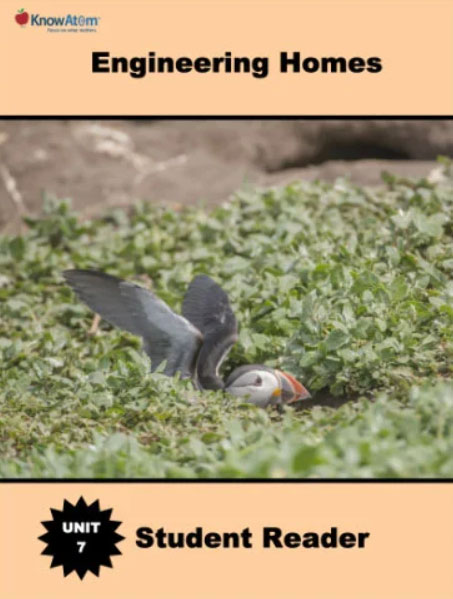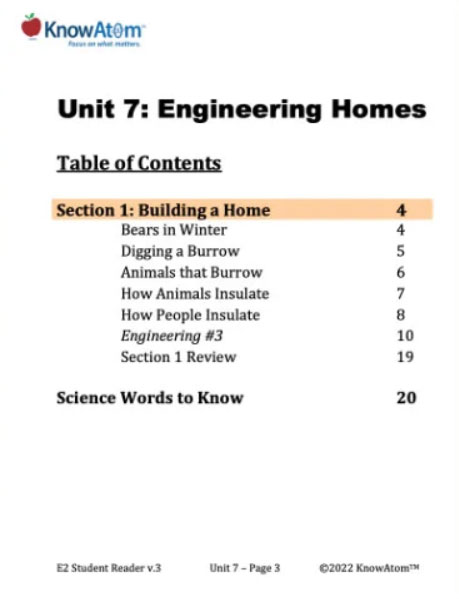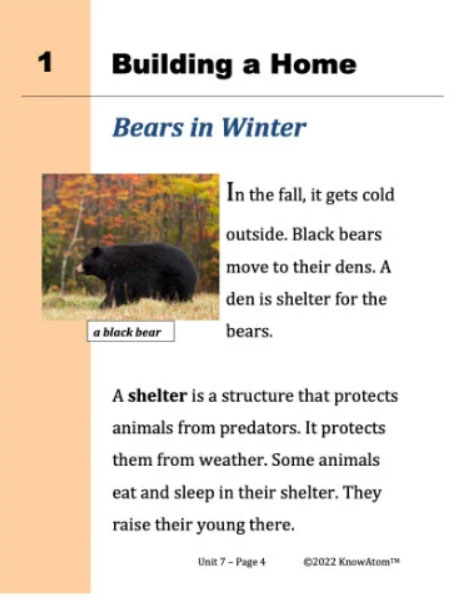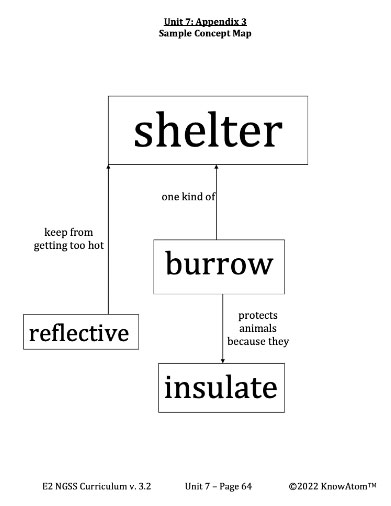In this lesson, students act as engineers and use what they know about one kind of shelter—a burrow— to design and build a shelter to solve the problem of keeping burrowing owls cool in the hot sun.
In the last unit, students observed butterflies moving through their life cycle, explored how butterflies are pollinators, and then designed a hand pollinator. In this unit, students explore the science phenomena of how shelters help animals survive in their environment and then design a prototype burrow-like structure to keep a burrowing owl cool in hot temperatures. This page showcases high-level extracts from each section of this engineering lesson.
The science background section provides teachers with more detailed information about the science phenomena being studied in this unit. It assists teachers in understanding the topic more deeply to facilitate the engineering challenge with their students.
Different animals have different kinds of shelters. A shelter is a place that protects animals from predators and weather. Some shelters are easy to see, while others are camouflaged, blending into the environment. Some shelters are for just one or two animals, while others, such as the social weaver nests, are large enough for a group. Each shelter uses specific materials based on the organism’s habitat and needs. For example, social weavers spend much of their time improving their nests, which they build out of sticks, grasses, and other plant-based materials. The nests provide the birds with important shelter from the harsh conditions of their desert environment, which can reach temperatures of 43 degrees Celsius (110 degrees Fahrenheit) in the summer and -10 degrees Celsius (14 degrees Fahrenheit) in the winter.
The nests are designed in a way that keeps the birds insulated from the extreme temperatures. To insulate means to keep an object from getting too hot or too cold. Insulating materials reduce the amount of heat that is transferred into or out of an object. In the winter, the nests can stay 15 degrees Celsius (60 degrees Fahrenheit) warmer than outside temperatures.
Black bears have a different way of staying warm in the cold. They pass the winter by hibernating in dens. A den can be a cave or a rock crevice, or it can be a burrow, which is a hole or tunnel dug by an animal for shelter. Black bears sometimes use their paws to dig a burrow out of a hillside. As temperatures start to drop in the fall, bears prepare for their long hibernation, which lasts for several months. During this time, the bears don’t eat or drink.
In this lesson, students act as engineers and use what they know about one kind of shelter—a burrow— to design and build a shelter to solve the problem of keeping burrowing owls cool in the hot sun.

Prepared hands-on materials, full year grade-specific curriculum, and personalized live professional development designed to support mastery of current state science standards.
Burrow : a hole or tunnel dug by an animal for shelter
Insulate : to keep an object from getting too hot or too cold
Reflective : a material that doesn’t absorb light or heat
Shelter : a structure that protects animals from predators and weather
How Animals Insulate
Animals use natural materials to insulate their shelter. The ground insulates burrows. It keeps heat from leaving the burrows when it is cold out. It keeps heat from entering the burrows when it is hot out.
Many birds build nests for shelter. They use soft plant materials to insulate the nest. They also use feathers.
How People Insulate
When people build homes, they need materials that keep their homes from getting too hot or too cold. Some materials are reflective. This means they don’t absorb much light or heat. This helps to keep an object from becoming too hot. The color white is reflective. Some shiny materials are also reflective. Dark colors are not reflective. They absorb light and heat. This makes them heat up more.
Other materials keep heat from moving to or from an object. This is how your coat keeps you warm. It keeps heat from moving from your body to the air.
This is important for houses as well. Houses have materials that keep heat from moving into or out of them. This is a house’s insulation. Insulating materials are often thick.



For the hands-on activity of this lesson, students design an owl shelter collaboratively in a small group. First, they summarize a problem presented in an engineering scenario, which is that there aren’t as many burrowing owls around today because their habitats have changed. Students draw a scientific diagram of their chosen prototype solution. Students use their diagram as a guide for creating their prototype owl shelter. Once students build their prototype shelter, they test it to determine how well it solved the problem, meeting the criteria within the constraints. Students collect and analyze data on how well each of their prototype solutions insulated the ice cube and kept it from melting, looking for evidence in their data about which prototype best solved the problem. They then communicate their results to the class, drawing conclusions about how people can solve problems with technology.
KnowAtom incorporates formative and summative assessments designed to make students thinking visible for deeper student-centered learning.

Standards citation: NGSS Lead States. 2013. Next Generation Science Standards: For States, By States. Washington, DC: The National Academies Press. Neither WestEd nor the lead states and partners that developed the Next Generation Science Standards were involved in the production of this product, and do not endorse it.
